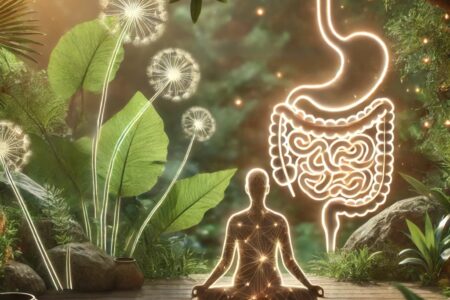درمانگری آیورودا
طب آیورودا چیست؟
آیورودا (Ayurveda) نوعی سیستم پزشکی سنتی 5000 ساله است که از کلماتِ سانسکریت “ayur” (زندگی) و “veda” (دانش) گرفته شده است.
از این رو آیورودا به “دانش زندگی” ترجمه میشود. آیورودا کهنترین سیستم پزشکی در جهان است و بسیاری از سیستمهای پزشکی دیگر از جمله طب سنتی
چینی (TCM) و آروماتراپی، ریشه در آیورودا دارند.
به صفحه یوتیوب ما بپیوندید
شروع دوره جامع آیورودا
علم زندگی
کره گی دکتر پیچک
What is Ayurvedic medicine?
Ayurveda is a traditional medical system that is 5,000 years old, derived from the Sanskrit words “ayur” (life) and “veda” (knowledge). Therefore, Ayurveda is translated as the “knowledge of life.” Ayurveda is the oldest medical system in the world, and many other medical systems, including Traditional Chinese Medicine (TCM) and aromatherapy, have roots in Ayurveda.
This science originated in India, and for centuries, people living in India have trusted traditional Ayurvedic medicine to help treat everything from infertility to digestive problems. The goal of Ayurveda is to achieve optimal balance and health by following the laws of nature. When we become aware of the laws of nature, we can adjust our daily routines and behaviors to align with nature. In fact, Ayurveda enhances our physical health and guides us toward the ultimate goal of spiritual understanding.
Ayurveda teaches individuals to take ownership of their health by adopting a healthy diet, proper lifestyle practices, and following daily and seasonal routines. The goal of this traditional medicine is not just to treat disease, but to maintain health and strive for complete balance between the mind and an energetic body. In this way, Ayurveda helps people live long, healthy, and balanced lives without the need for prescription medications, complex surgeries, or suffering from painful diseases.

The Impact of Yoga on the Brain: How This Ancient Practice Transforms the Mind

Consciousness in Yoga and Ayurveda: A Journey to Understanding Mind and Body

What Is Consciousness? A Look at Scientific Simplification and Mind Studies

Gut Health, Anxiety, and the Role of Yoga and Ayurveda in Healing

What Is Ghee Butter and Why Should You Use It?
Ayurveda and the four goals of life:
According to classical Indian philosophy, from which both Ayurveda and Yoga originate, there are four goals of life: Dharma, Artha, Kama, and Moksha.
Ayurveda means the “science of life” and consists of a vast body of knowledge about healthy living and disease treatment. It covers medical fields ranging from psychology to surgery and from pediatrics to geriatrics. Initially passed down orally, Ayurvedic knowledge was eventually written in the ancient Indian language of Sanskrit. Charaka, Sushruta, and Vagbhata are the authors of the three classical sacred texts of Ayurveda.
Ayurveda and Yoga in Modern Times:
Ayurveda has expanded beyond India into the modern Western world, where its focus on overall health and well-being has been widely embraced, contributing to its growing popularity. Ayurveda and Yoga are sister sciences, both emerging from the same philosophy. However, Ayurveda primarily focuses on the goal of Dharma (living the right way), while Yoga primarily emphasizes the goal of Moksha (enlightenment). Both systems take a holistic approach, viewing people as integrated beings with body, mind, and consciousness. To achieve the ultimate goal and truth, both Yoga and Ayurveda should be studied and practiced together.
Dharma (Right Way of Living):
Dharma is the principle of living in a way that enhances both inner and outer harmony and health, aligned with the universal principle of peace. Following Dharma means being true to one’s nature and acting out of a sense of duty and respect, rather than being driven by compulsive habits. This means living life with responsibility towards oneself, others, and the world as a whole, and acting for the benefit of all.
Artha (Material Wealth):
A certain amount of wealth is necessary for comfort and self-support. Ayurveda and Yoga do not pass judgment on the acquisition of wealth, as long as it is done without harm to others and any abundance is shared with others.
Kama (Sensory Pleasure):
Ayurveda and Yoga recommend moderation in the pursuit of sensory pleasures. While experiencing the positive effects of art and nature is beneficial, overindulgence in the senses can lead to addiction, frustration, and illness.
Moksha (Enlightenment):
Moksha refers to overcoming our limitations and finding true freedom within. It means liberation from the identification with the body and mind, and understanding that our true nature is consciousness beyond these two. Achieving Moksha is a very challenging goal, and thus the practices of Hatha and Raja Yoga were developed to assist in this pursuit.

Pharmaceutical consultation and Ayurvedic medicine

Money back guarantee up to 7 days









